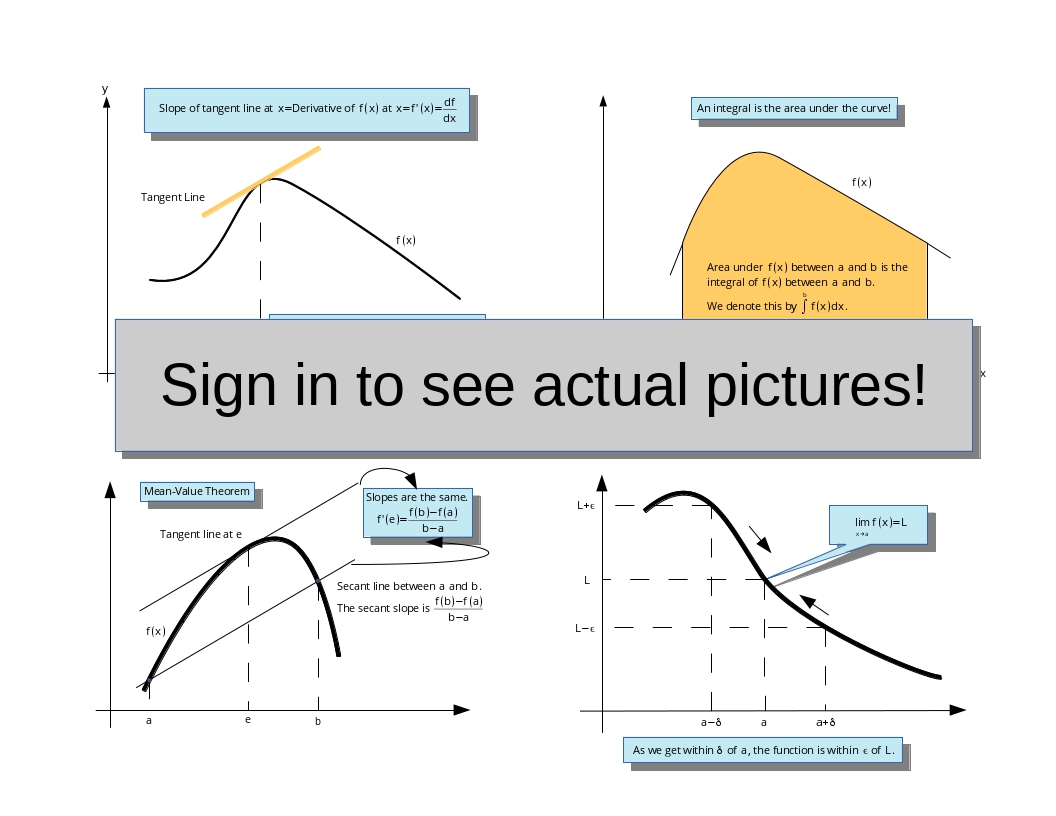Rules of Inequalities
Primary tabs
SAMPLE LESSON
Sign in for easy to read lessons narrowly focused on a specific subject. All lessons are linked to each other allowing you to easily see the connections between different Calculus concepts. Our unique Calcmap will give you a bird's-eye view of all our lessons and help you see how important concepts are related to each other. All of the formulas are available to our subscribers, but here is a sample of the lesson you will see when you log in:
Where do inequalities come from? They come from the number line! Recall on the number line that anything to the left of something else is smaller. For example, 1 is less than 3 because it is to the left of 3. Similarly, −3 is smaller than 1 because −3 is to the left of 1. The other way of saying this is that if it lies to the right then it is greater.

To express whether something is bigger (or smaller) than something else we use inequality symbols:
| Symbol | Meaning | Examples |
|---|---|---|
| < | is less than | <Sign in to see all the formulas>, <Sign in to see all the formulas> |
| > | is greater than | <Sign in to see all the formulas>, <Sign in to see all the formulas> |
| ≤ | is less than or equal to | <Sign in to see all the formulas>, <Sign in to see all the formulas> |
| ≥ | is greater than or equal to | <Sign in to see all the formulas>, <Sign in to see all the formulas> |
In elementary school we learned that the symbols are an alligator eating the bigger number. We should also note that if <Sign in to see all the formulas> then we can also say that <Sign in to see all the formulas>. Again, the alligator eats the bigger number whether it is on the left or right of the inequality symbol.
Along with these four symbols are three rules of inequalities:
| Rules of Inequalities |
|---|
Let's assume that a, b and c are all real numbers. The following rules are true:
These rules also hold for >, ≤, and ≥. For example, if <Sign in to see all the formulas> and <Sign in to see all the formulas>, then <Sign in to see all the formulas>. |
A linear inequality is an inequality that can be simplified to look like <Sign in to see all the formulas> (or <Sign in to see all the formulas> or <Sign in to see all the formulas>, etc.) To get an inequality into this form we can use the Rules of Inequalities. Here is an example.
Finally, while we do not have enough tools to formally prove it, by keeping the number line in mind we can see that the following is also true: if <Sign in to see all the formulas> and <Sign in to see all the formulas>, then <Sign in to see all the formulas>.

